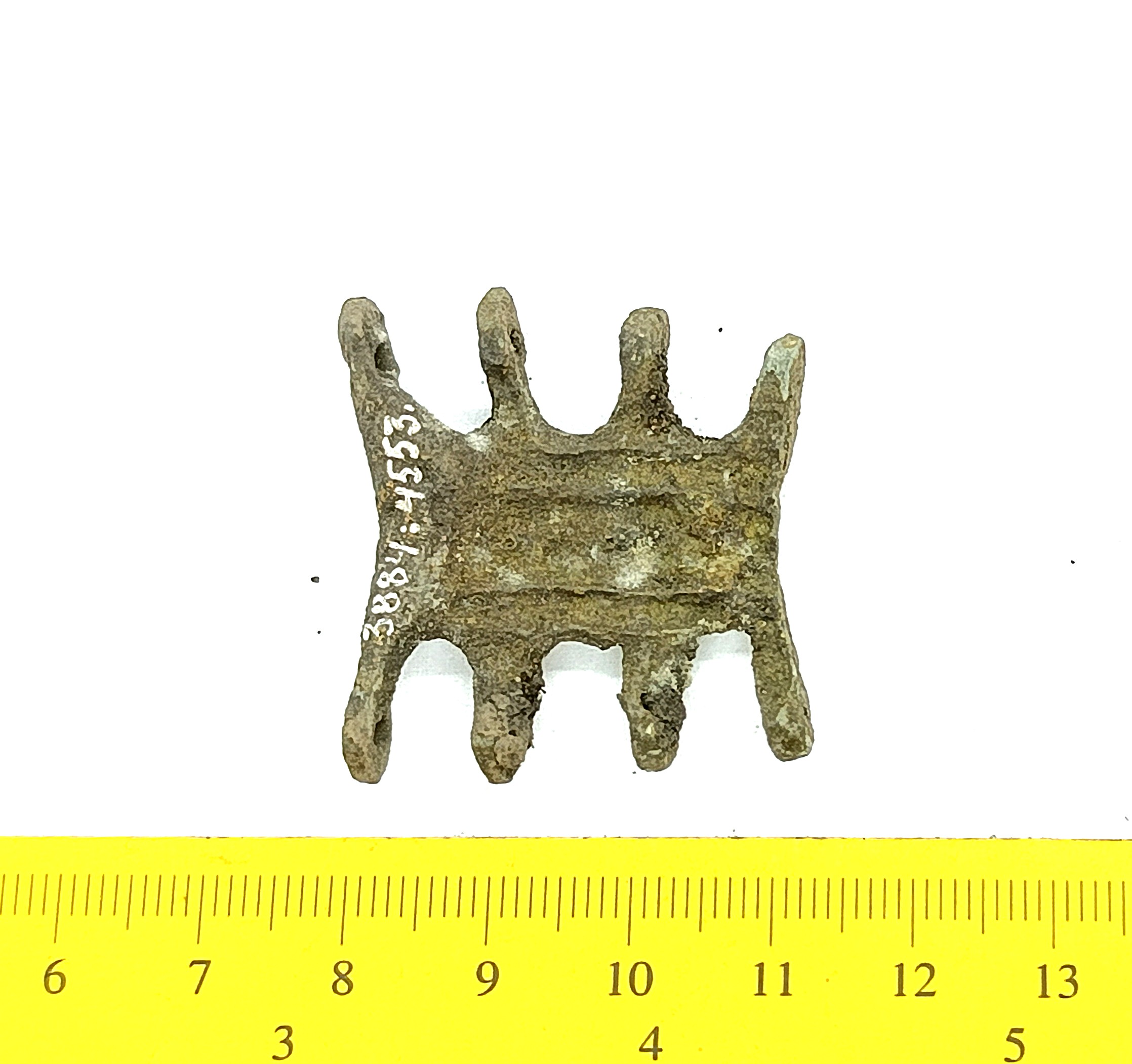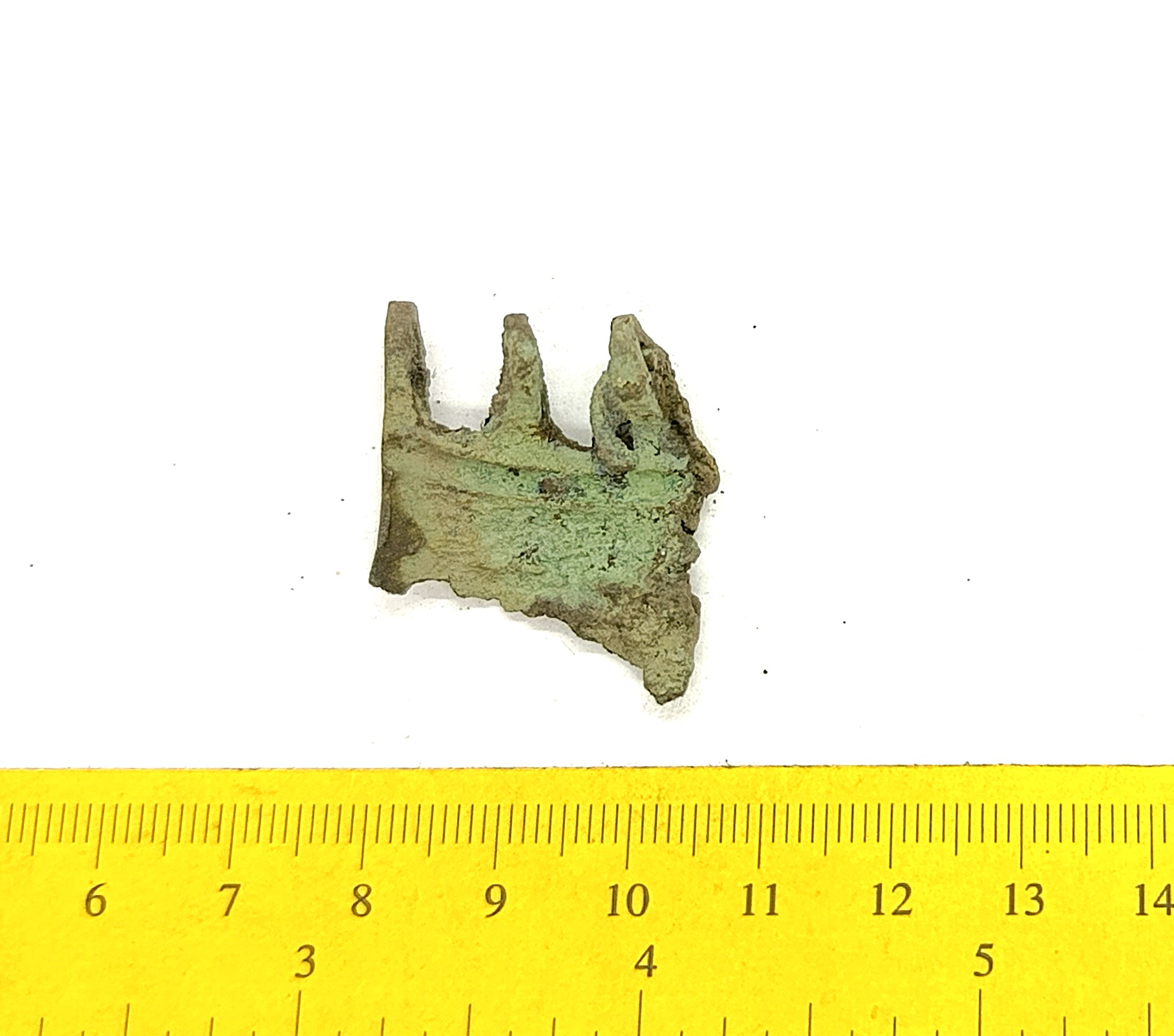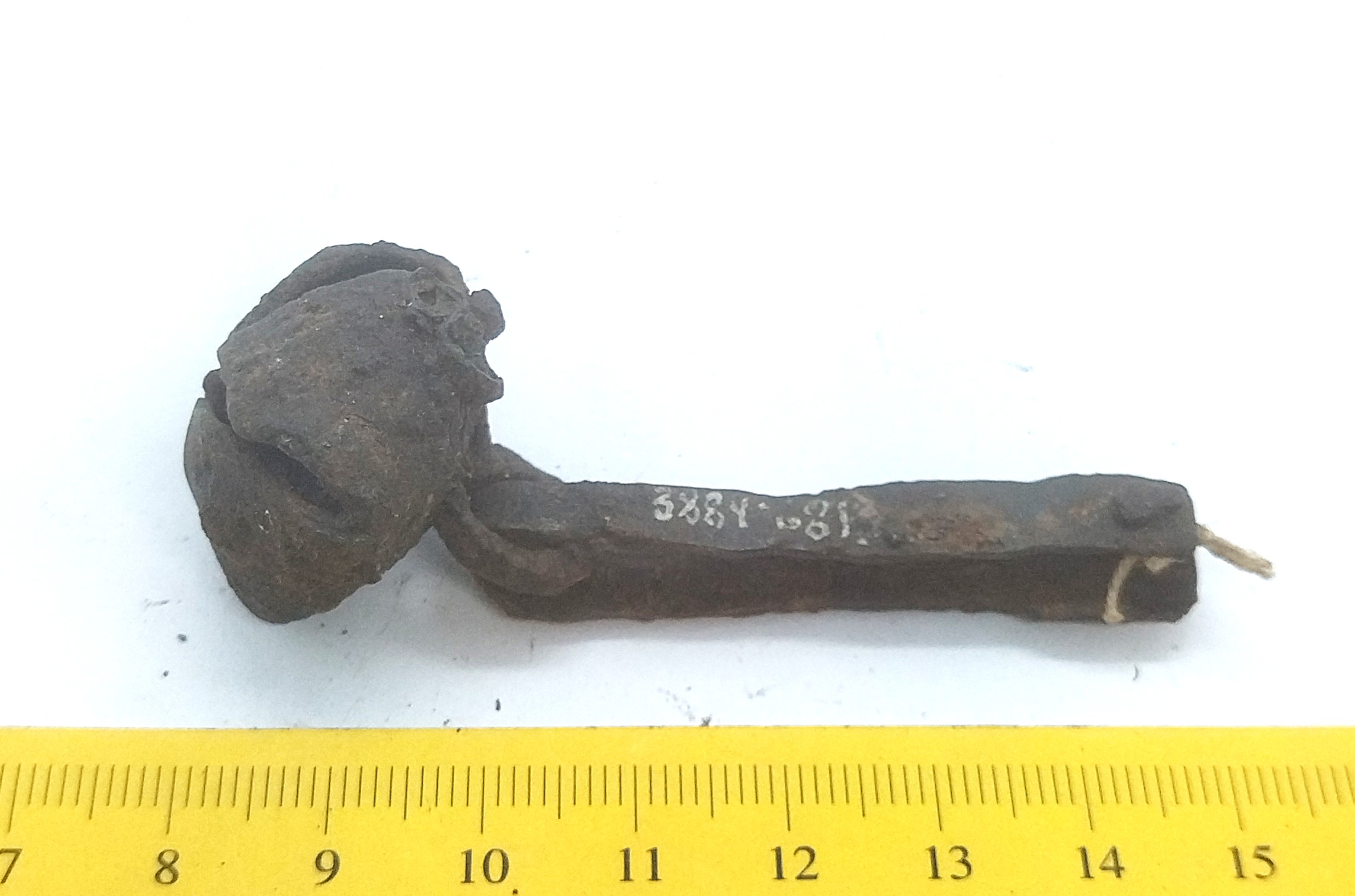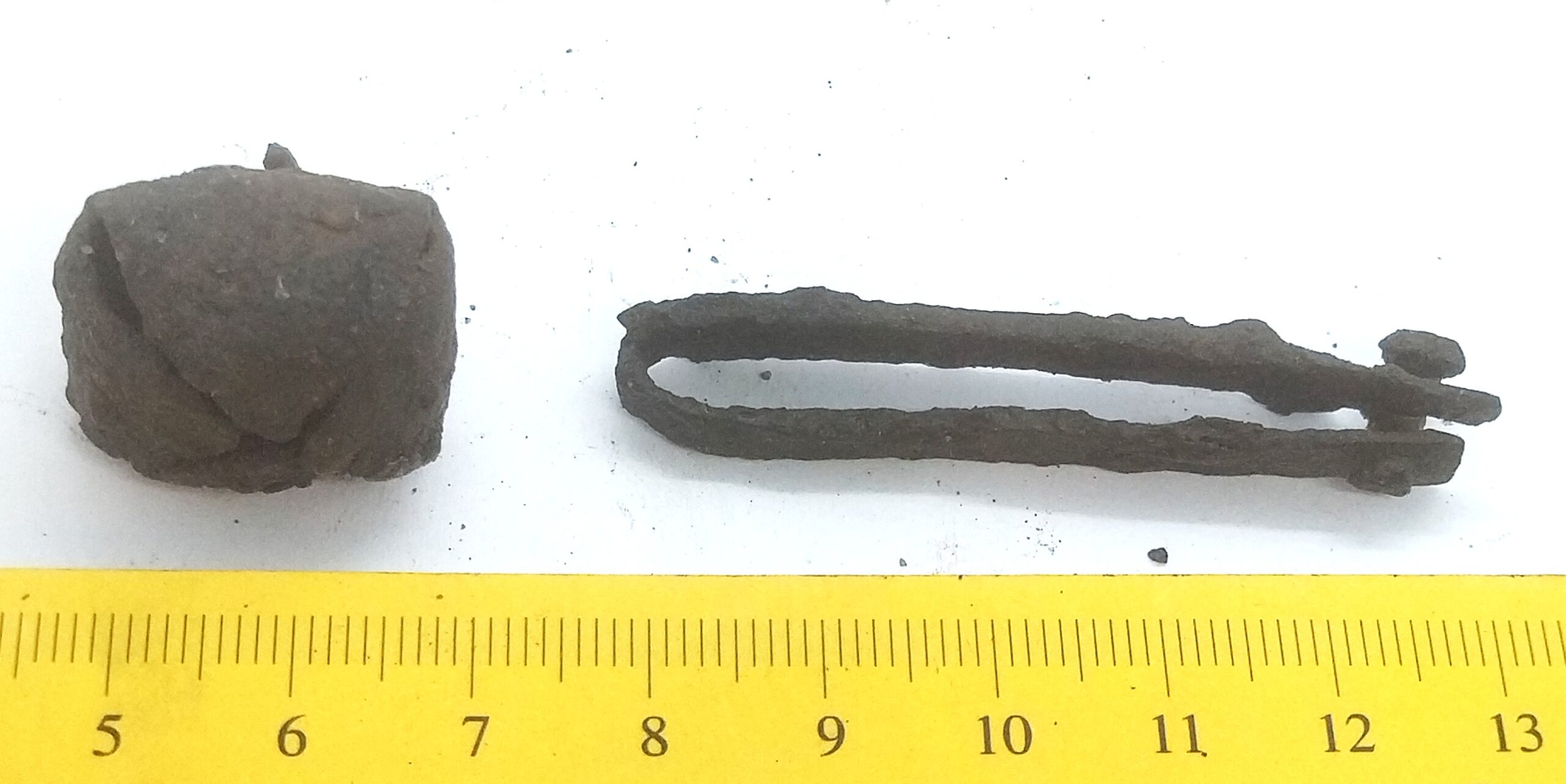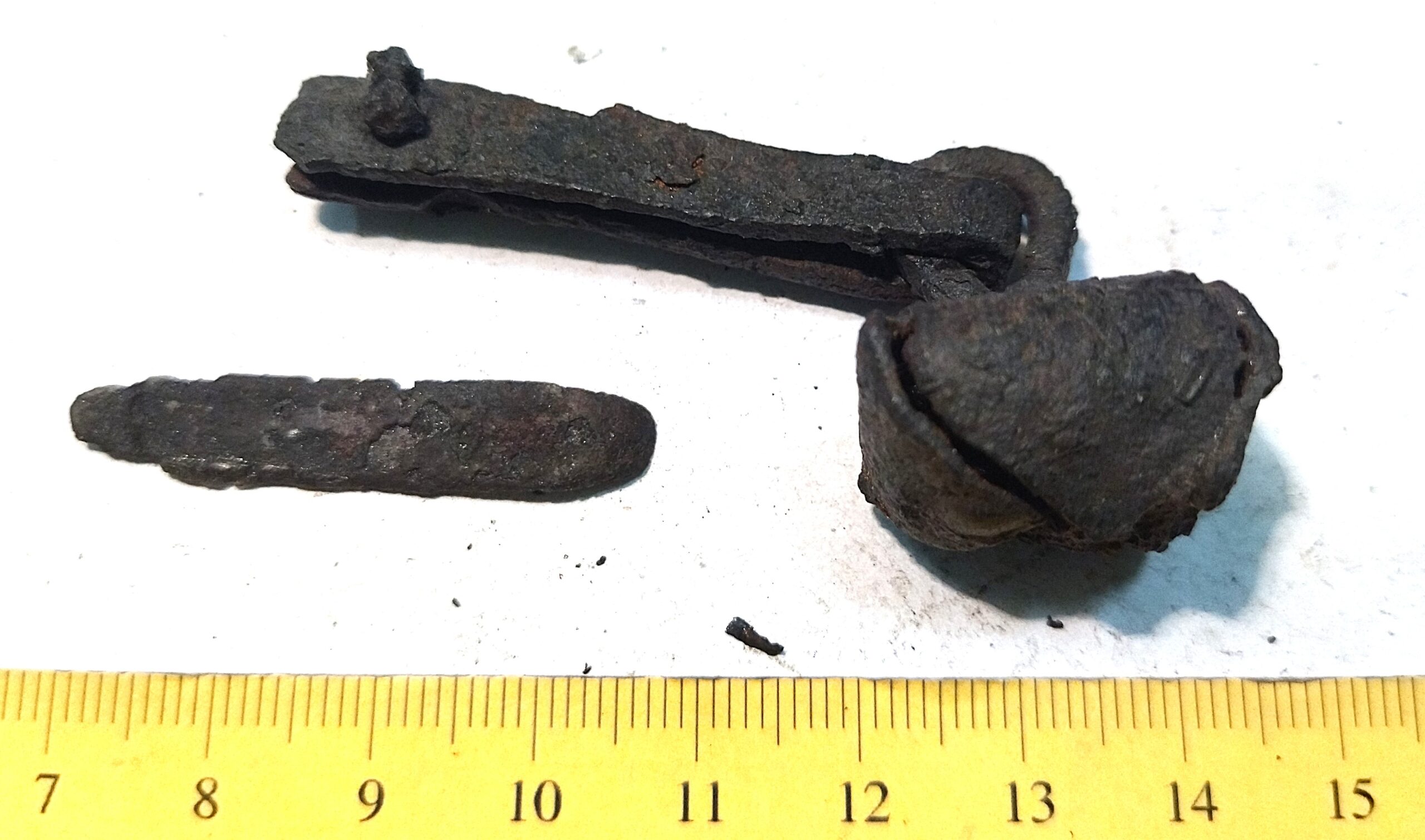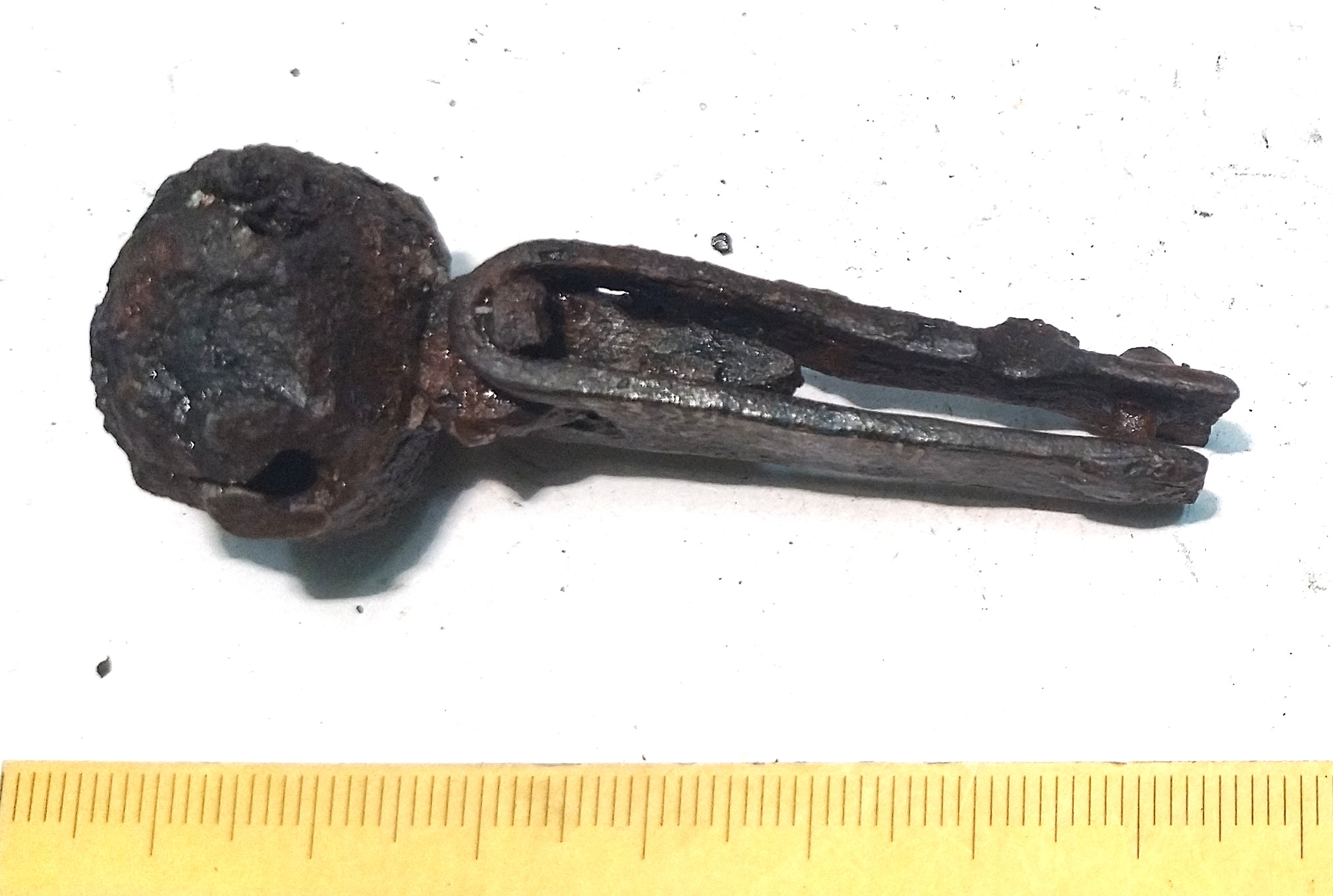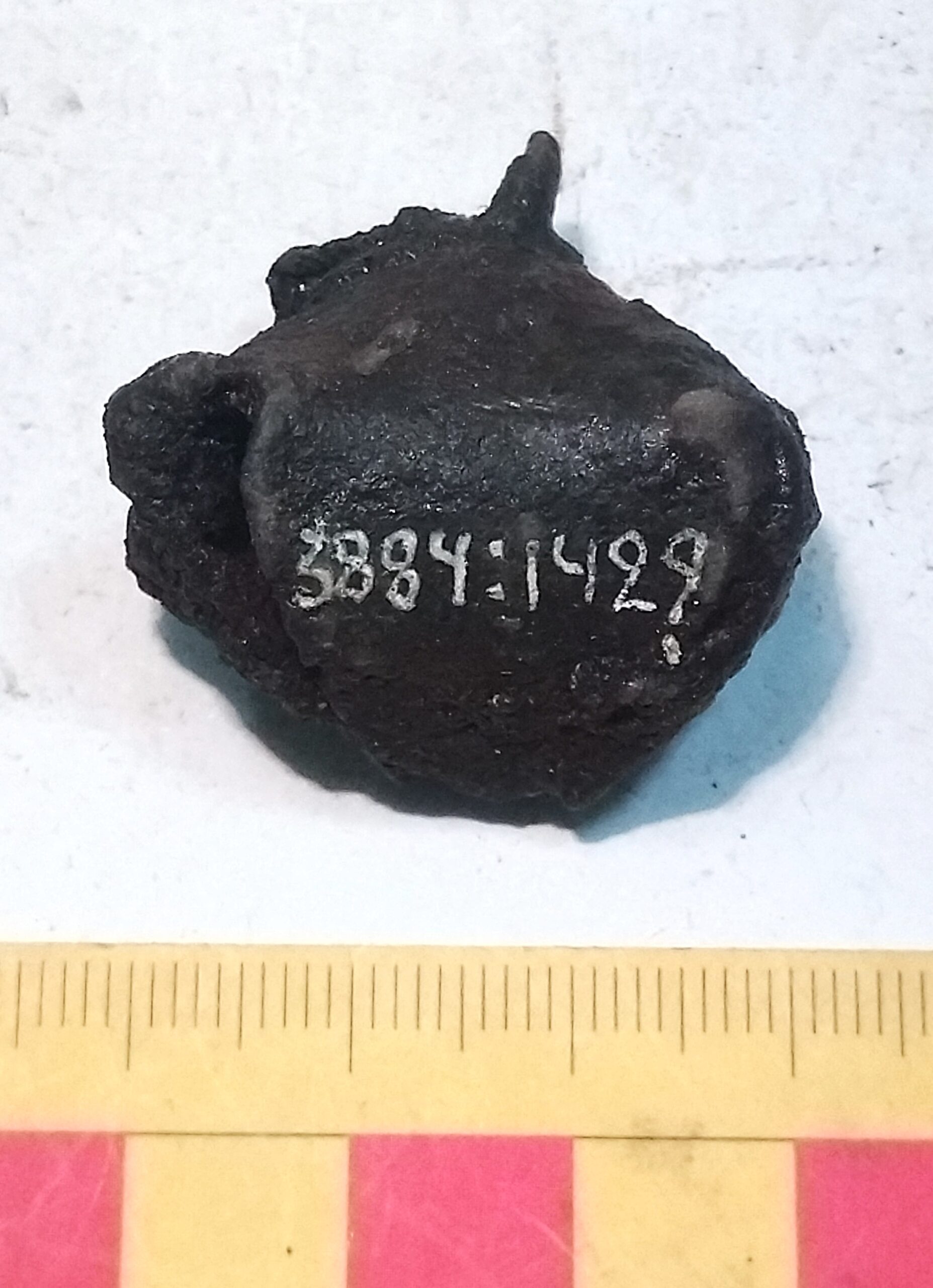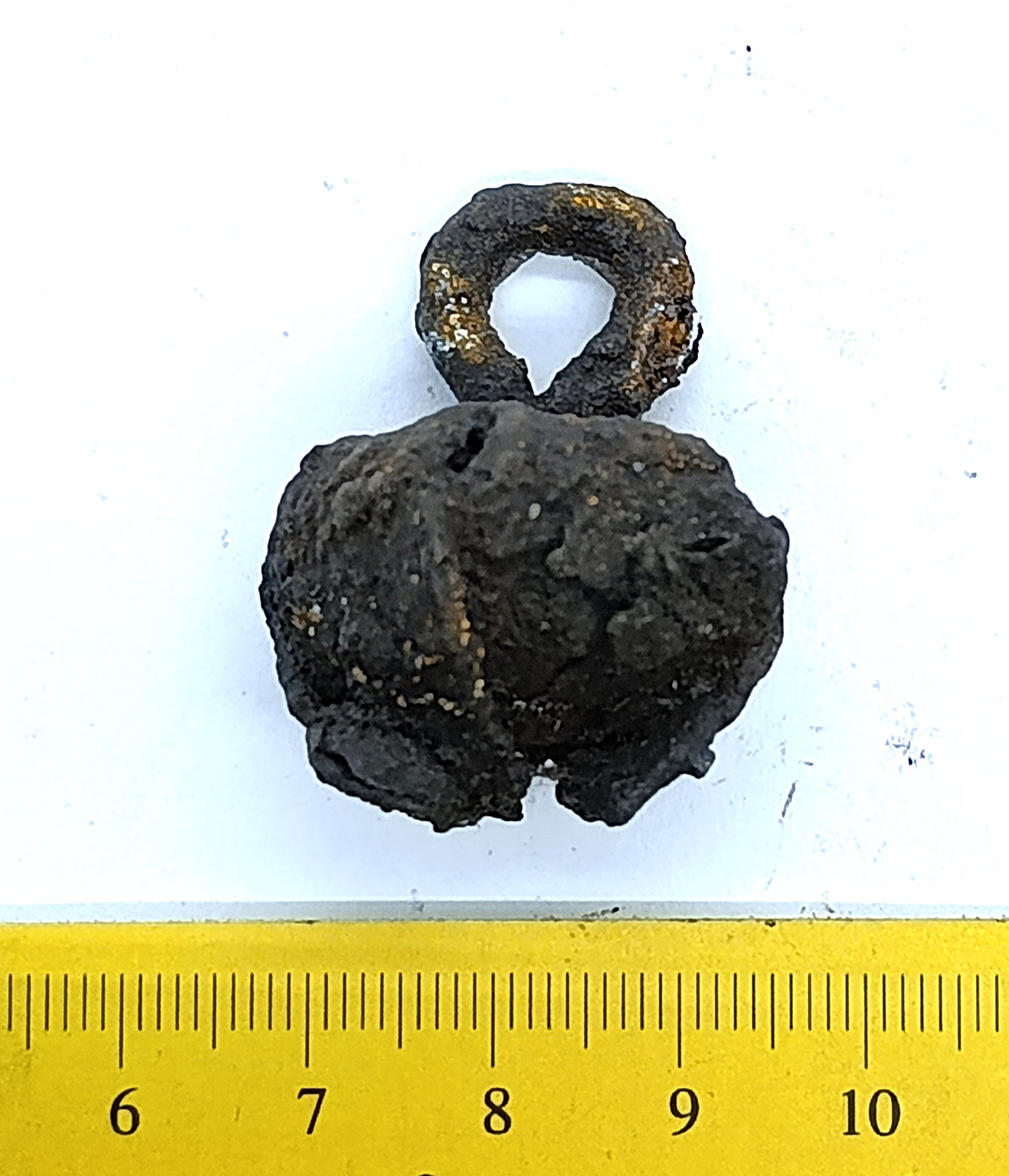Database
Our database is free to use for all history and archaeology enthusiasts. If you use our database, please do not forget to cite correctly:
Mägi, Marika; Palm, Piia Sandra. Archaeological Artefacts of Saaremaa. Foundation Osiliana / Tallinn University. Accessed: date.
The Osiliana Archaeological Database presents artefacts from Saaremaa and the surrounding small islands.
The database contains mainly Iron Age and Medieval finds that can be classified.
Undated metal or other pieces were generally excluded from the database.
Ceramics are represented by isolated examples.
The database is a work in progress and is constantly being updated.
Viltina
Chain arrangement link and chain fragment, copper alloy.
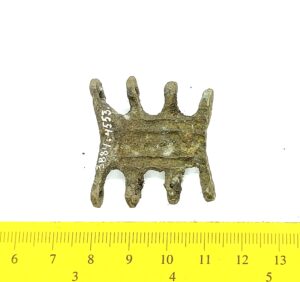
Chain arrangement link, copper alloy. Links of this type are a typical part of chain arrangements found in the 13th-century inhumation graves of Estonian women, but also in the earlier stone graves with mixed cremations. Numerous such links are stray finds. They were worn everywhere in the areas once inhabited by Baltic Finns, and in some other areas, e g in Semigallia (Spirģis 2008, 168–170).
Spirģis, R. 2008. Bruņrupuču saktas ar krūšu važiņrotām un lībiešu kultūras attīstība Daugavas lejtecē 10.-13. gadsimtā. Latvijas Vēstures Institūta apgāds, Rīga.
Viltina
Chain arrangement link and chain fragment, copper alloy.
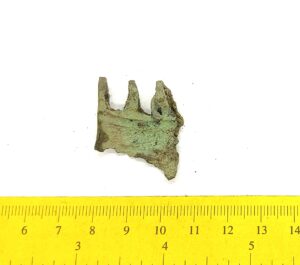
Chain arrangement link, copper alloy. Links of this type are a typical part of chain arrangements found in the 13th-century inhumation graves of Estonian women, but also in the earlier stone graves with mixed cremations. Numerous such links are stray finds. They were worn everywhere in the areas once inhabited by Baltic Finns, and in some other areas, e g in Semigallia (Spirģis 2008, 168–170).
Spirģis, R. 2008. Bruņrupuču saktas ar krūšu važiņrotām un lībiešu kultūras attīstība Daugavas lejtecē 10.-13. gadsimtā. Latvijas Vēstures Institūta apgāds, Rīga.

Bridle bells, iron. These iron bells were attached to bridles. In Estonia they have been found from stone graves with cremation burials, where they can also date to the early 13th century.
Mägi, M. 2002. At the Crossroads of Space and Time. Graves, Changing Society and Ideology on Saaremaa (Ösel), 9th–13th Centuries AD. (CCC Papers, 6.) Tallinn.
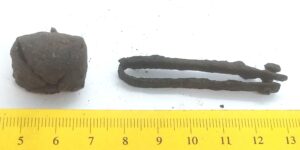
Bridle bells, iron. These iron bells were attached to bridles. In Estonia they have been found from stone graves with cremation burials, where they can also date to the early 13th century.
Mägi, M. 2002. At the Crossroads of Space and Time. Graves, Changing Society and Ideology on Saaremaa (Ösel), 9th–13th Centuries AD. (CCC Papers, 6.) Tallinn.
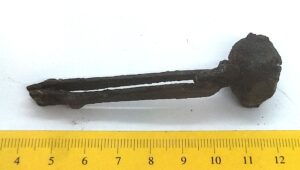
Bridle bells, iron. These iron bells were attached to bridles. In Estonia they have been found from stone graves with cremation burials, where they can also date to the early 13th century.
Mägi, M. 2002. At the Crossroads of Space and Time. Graves, Changing Society and Ideology on Saaremaa (Ösel), 9th–13th Centuries AD. (CCC Papers, 6.) Tallinn.
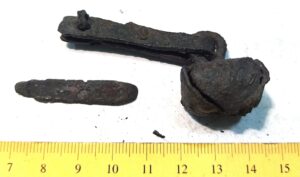
Bridle bells, iron. These iron bells were attached to bridles. In Estonia they have been found from stone graves with cremation burials, where they can also date to the early 13th century.
Mägi, M. 2002. At the Crossroads of Space and Time. Graves, Changing Society and Ideology on Saaremaa (Ösel), 9th–13th Centuries AD. (CCC Papers, 6.) Tallinn.
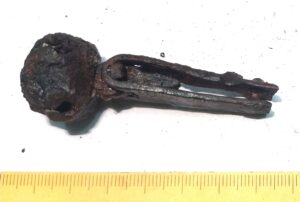
Bridle bells, iron. These iron bells were attached to bridles. In Estonia they have been found from stone graves with cremation burials, where they can also date to the early 13th century.
Mägi, M. 2002. At the Crossroads of Space and Time. Graves, Changing Society and Ideology on Saaremaa (Ösel), 9th–13th Centuries AD. (CCC Papers, 6.) Tallinn.
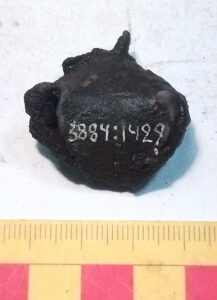
Bridle bells, iron. These iron bells were attached to bridles. In Estonia they have been found from stone graves with cremation burials, where they can also date to the early 13th century.
Mägi, M. 2002. At the Crossroads of Space and Time. Graves, Changing Society and Ideology on Saaremaa (Ösel), 9th–13th Centuries AD. (CCC Papers, 6.) Tallinn.

Bridle bells, iron. These iron bells were attached to bridles. In Estonia they have been found from stone graves with cremation burials, where they can also date to the early 13th century.
Mägi, M. 2002. At the Crossroads of Space and Time. Graves, Changing Society and Ideology on Saaremaa (Ösel), 9th–13th Centuries AD. (CCC Papers, 6.) Tallinn.
The negative value refers to time Before Christ.

